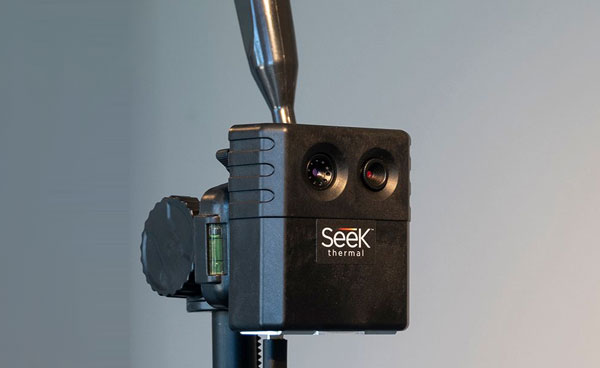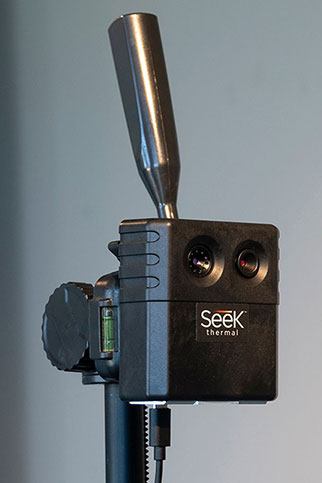
To further develop effective and customized solutions for Seek Scan™, one of the most affordable thermal temperature screening solutions meeting FDA guidelines during the COVID-19 public health emergency, Seek Thermal announced it has made APIs available for access control, VMS and other integrated network capabilities.
The Seek Scan thermal imaging system (MSRP $1,995) is specifically designed and calibrated to quickly automate body temperature screening using skin temperature as a proxy while enabling social distancing protocols.
In a few seconds, the system automatically detects a face for measurement and displays an alert if the readings are warmer than the customizable alarm temperature.
The thermal scanning system follows FDA guidelines by meeting the accuracy specification, including a reference heat source (black body), and by being made for single person screening at a fixed distance.
The new API capabilities allow Seek Scan to be accessible anywhere on a network, enabling access control systems, video management systems, integrators, and business owners to manage and access their Seek Scan systems and solutions.

Now, integrators can implement Seek Scan temperature screening to send alarm events, trigger access control and video management systems as well as pull and present historical data to integrate multiple Seek Scan units into one enterprise solution.
Specific integrated functionality could include:
- Accessing entry doors following scans
- Triggering access control and video management systems
- Allowing custom-designed solutions utilizing Seek Scan hardware
- Sending pass/fail scan messages and alarm events
- Flagging video when a scan occurs
“The demand for temperature screening and integrated API solutions has been growing rapidly,” said Mike Muench, CEO and President of Seek Thermal.
“As businesses, institutions and organizations seek to provide safer environments in an increasingly uncertain time, we recognize the needs of our customers don’t stop with the contactless screening technology itself – the new and expanded integration capabilities of Seek Scan offer additional control, convenience, and confidence.”
Whether the desire is to unlock a door with a temperature scan, capture an image or flag a video when a scan occurs, or send email alerts, Seek Thermal has made it easy for integrators to connect temperature screening to their network using its JSON based APIs to do all that and more.
With Seek Scan, the company has developed customer relationships with a diverse group of leading organizations, including manufacturers, government institutions, hospitals, and medical facilities, office buildings, hotels and hospitality providers, schools and universities, first responders and, professional sports organizations.
Seek Thermal will continue to release features, capabilities and protocols to enhance its API offering.
| Availability | API Protocol | Key Benefits |
| Now Available | UDP | UDP push notifications allow you to receive pass/no pass scan events on a network. This enables integration with access control systems to unlock a door with a temperature scan. |
| Now Available | TCP | TCP provides pass/no pass scan events and allows you to query a database of historical scans and stored images. Additionally, TCP capabilities let you adjust Seek Scan settings remotely from other connected devices on your network. |
| Coming Soon | RTSP | RTSP streaming allows you to view a live stream of the Seek Scan camera on your network and provides integration capabilities with common platforms like Video Management Systems. |
Seek Scan should not be used to diagnose or exclude diagnosis of COVID-19 or any other disease or condition. A diagnostic test by medical professionals must be performed to determine if someone has COVID-19.
Seek Thermal engineers and manufactures low-cost, high-resolution thermal imaging cameras and OEM thermal cores.
Source: thermal.com
